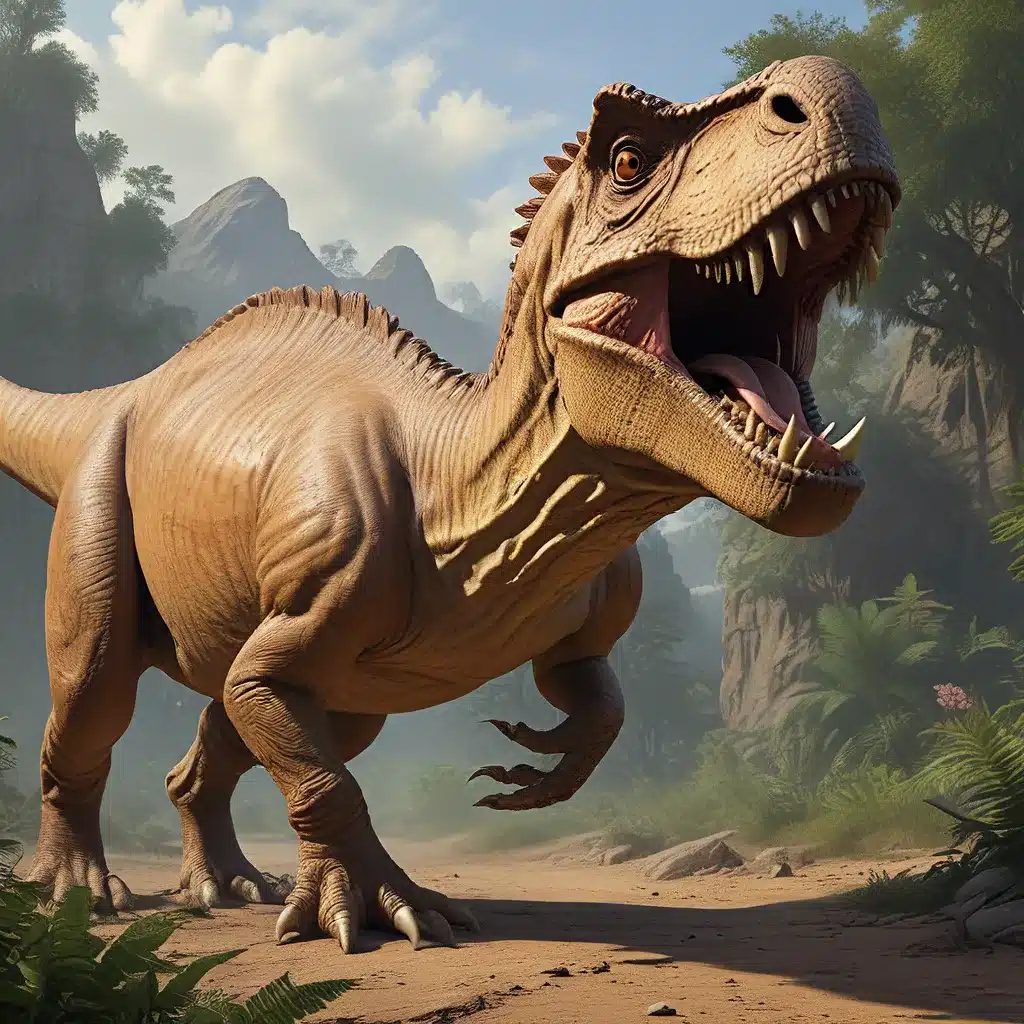
In the vast expanse of Earth’s ancient history, the dinosaurs reign supreme as some of the most captivating and enigmatic creatures to have ever walked the planet. From the colossal Tyrannosaurus Rex to the graceful Brontosaurus, these prehistoric giants have captured the imagination of scientists, historians, and the general public alike. As we delve deeper into the paleontological archives, new discoveries and insights are constantly emerging, shedding light on the complex world of these long-extinct beings.
Decoding the Prehistoric Soundscape
One of the most intriguing aspects of the dinosaur realm is the ongoing quest to decipher their communication methods. While we may never truly know the full extent of how these creatures interacted with one another, recent advances in technology and scientific analysis have opened up new avenues of exploration.
Through the study of fossilized remains, paleontologists have been able to reconstruct the anatomical structures responsible for sound production in various dinosaur species. For instance, the presence of specialized air sacs and resonating chambers in certain theropod dinosaurs suggests that they may have had the capacity for complex vocalizations, possibly used in territorial disputes, mating rituals, or even social bonding.
Moreover, the analysis of fossilized footprints has provided valuable insights into the locomotion patterns and social behaviors of these prehistoric giants. By studying the spacing and directionality of these footprints, researchers can gain a better understanding of how dinosaurs moved in herds, responded to threats, and interacted with their environments.
Unearthing Evolutionary Mysteries
The discovery of feathered dinosaurs has been a particularly significant development in the field of paleontology, challenging long-held assumptions about the evolutionary relationship between dinosaurs and modern birds. These remarkable finds, such as the Archaeopteryx and the Microraptor, have not only blurred the lines between avian and non-avian dinosaurs but have also shed light on the complex and dynamic nature of evolutionary processes.
As researchers continue to uncover fossil evidence and explore the genetic and anatomical connections between dinosaurs and their modern avian descendants, the understanding of evolutionary pathways continues to evolve. These discoveries have profound implications for our comprehension of the origin of flight, the diversification of species, and the resilience of life on our planet.
Uncovering the Secrets of Prehistoric Cultures
Alongside the study of dinosaurs themselves, the exploration of ancient human cultures and their interactions with these prehistoric creatures has become a fascinating area of research. Archaeological excavations have unearthed artifacts and artwork that provide invaluable insights into how early civilizations perceived and integrated dinosaurs into their mythologies, religious beliefs, and daily lives.
For example, the Aztec civilizations of Mesoamerica were known to have incorporated dinosaur-like creatures into their artistic representations and creation myths, suggesting a deep-rooted cultural fascination with these enigmatic beings. Similarly, the ancient Chinese cultures produced intricate dragon imagery and legends that bear striking resemblance to certain dinosaur species, hinting at a shared cultural memory or even direct encounters with these prehistoric giants.
The Lost Kingdoms website delves deeper into these intriguing connections between ancient cultures and the prehistoric world, exploring how our understanding of the past can be enriched by uncovering these unexpected links.
Emerging Theories and Controversies
As the field of paleontology continues to evolve, new theories and controversies have emerged, challenging our existing perceptions and pushing the boundaries of our understanding. One such area of debate is the potential mass extinction events that shaped the course of life on Earth, such as the Cretaceous-Paleogene (K-T) extinction event that wiped out the non-avian dinosaurs.
While the asteroid impact theory has long been the dominant explanation for this cataclysmic event, some researchers have proposed alternative hypotheses, such as volcanic activity, climate change, or even extraterrestrial phenomena. These ongoing discussions highlight the dynamic nature of scientific inquiry and the importance of maintaining an open-minded approach to understanding the complex and ever-changing story of life on our planet.
Another area of controversy surrounds the classification and taxonomy of certain dinosaur species. As new fossil discoveries continue to challenge established taxonomic frameworks, paleontologists must grapple with the complexities of evolutionary relationships and the accurate identification of these prehistoric creatures.
Embracing the Wonder of Dinosaurs
As we delve deeper into the rich tapestry of dinosaur history, it becomes increasingly clear that these enigmatic creatures hold the key to unlocking a deeper understanding of our own past, present, and future. From the intricate details of their anatomy and communication methods to the cultural fascination they have inspired across civilizations, the study of dinosaurs remains a testament to the boundless curiosity and scientific ingenuity of humanity.
By embracing the wonder of these prehistoric giants, we can continue to push the boundaries of our knowledge, uncover new insights, and celebrate the enduring legacy of the dinosaurs that once roamed the Earth. As we stand in awe of their towering presence and the mysteries they hold, we are reminded of the resilience and adaptability of life, and the invaluable lessons it has to offer us in the present and the future.


